
The
evolution of Rhosydd
The remains of No.3 level Slate Mill
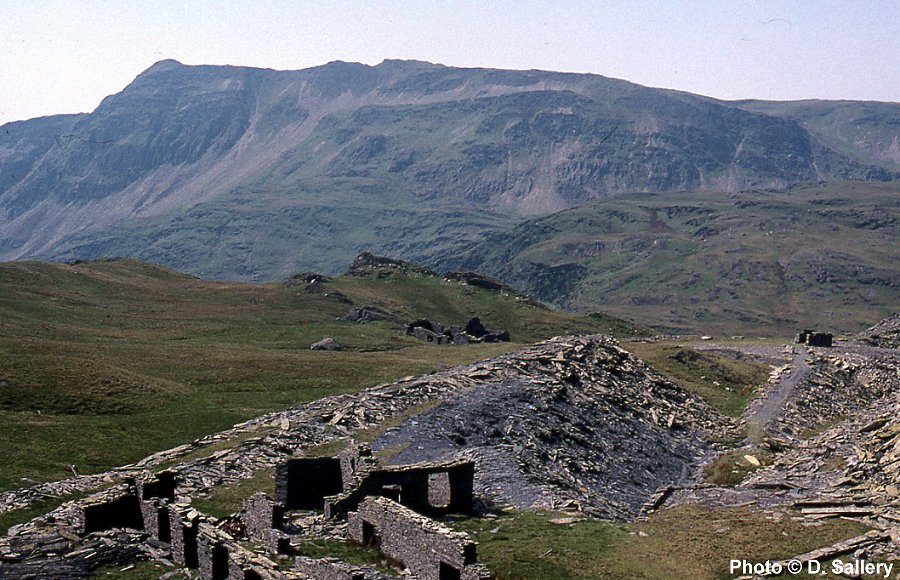
These
are the remains of No. 3 mill, so named because they are located on working
level 3 from the top of the site. This mill was built in 1856 when
it took over from the much smaller No. 2 mill. No. 3 mill had a short
life and from 1867 all operations were concentrated on No. 9 level.
In the centre of the view can be seen the ruins of the barracks on No.
4 level. This early barracks had an evil reputation for being draughty,
cold and filthy. Seemingly the one which replaced it on No. 9 level was
nearly as bad! The summit of Cnicht is in the background.
Level No.4 of Rhosydd
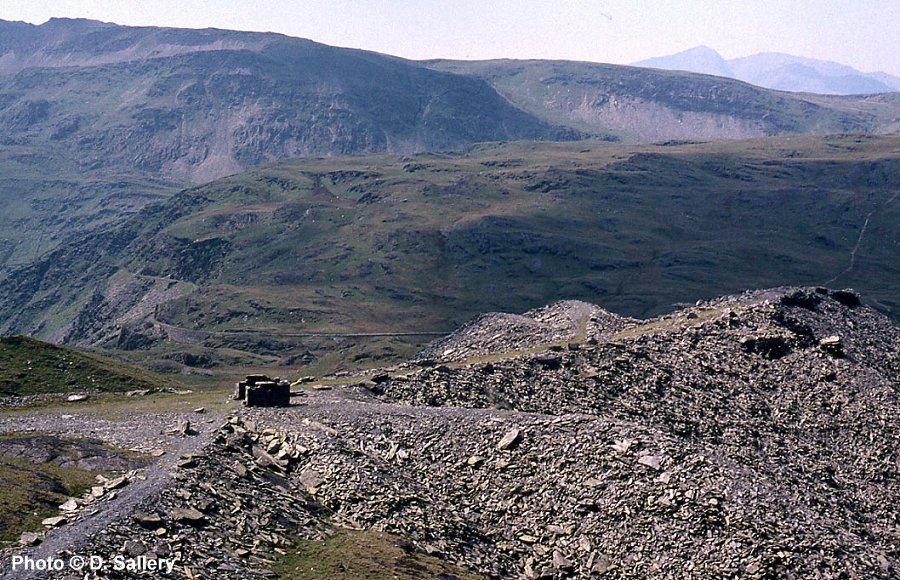
The
remains of the incline drum house on level 4 can be seen here. This
worked a gravity incline down to level 7 where a further incline
led to level 9. Above the drum house can be seen the exit tramway to Croesor
and Porthmadog making its sinuous way alongside
the side of the mountain. There was an adit into the mine at this
level and also a smithy. The adit and smithy were probably abandoned
in the 1890's. The summit of Snowdon can be faintly seen in the top right.
Looking down on Level No.9
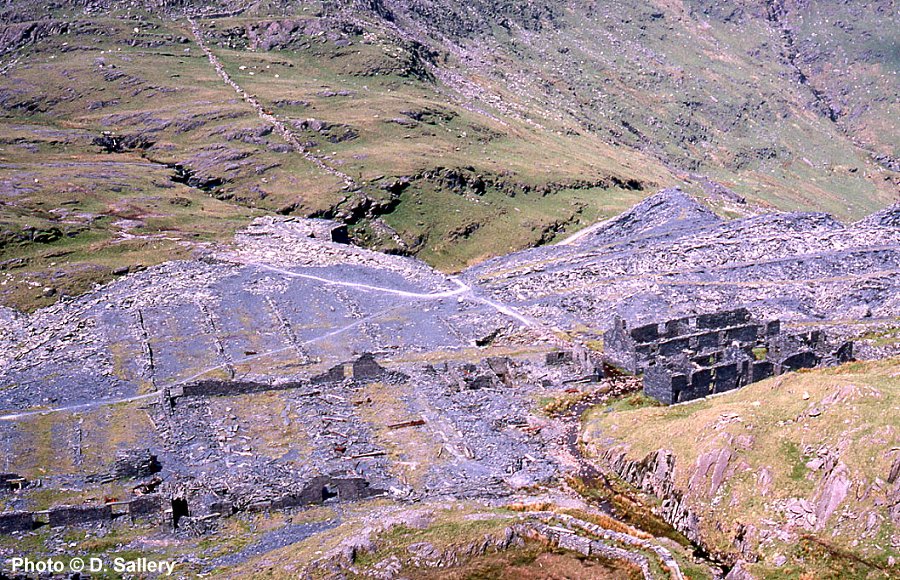
Looking
down onto level 9 from level 7. Level 9 became the hub of the quarry
and was where the main mill and barracks were located. The outline
of the mill can be clearly seen in the bottom left centre of the view with
the stock yard for the finished slates beyond. The main mill was
rebuilt and extended several times over the years and assumed its final
outline after 1910. All sawing and dressing of slates then took place
in this building. The tramway to Croesor and Porthmadog used to leave
the quarry to the left. The stream in the bottom right marks the
entrance to 9 adit, which via internal inclines led to all the working
levels inside the mine.
The main entrance to the mine on Level No. 9
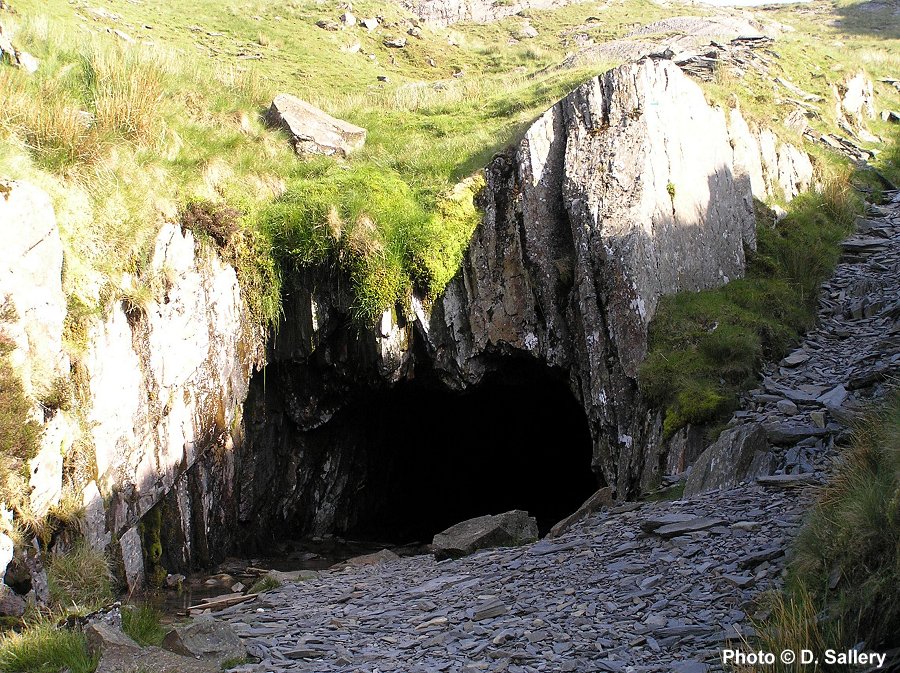
This entrance, the main adit, was over 2200 feet long and wagons were hauled in and out using a continuous rope haulage system. The rope was powered by a water wheel situated between the main mill and the barracks. Special transporter wagons called "megryns" had an attachment to grip the cable and these were marshalled at each end of a rake of wagons. A curious feature of this adit is that the double line of track only used three rails, the centre rail being common to both. This meant that wagons with double flanges, common in other quarries could not be used at Rhosydd. There was a loop halfway along the adit where outgoing loads passed ingoing empty wagons. Below is the view looking out of the adit.
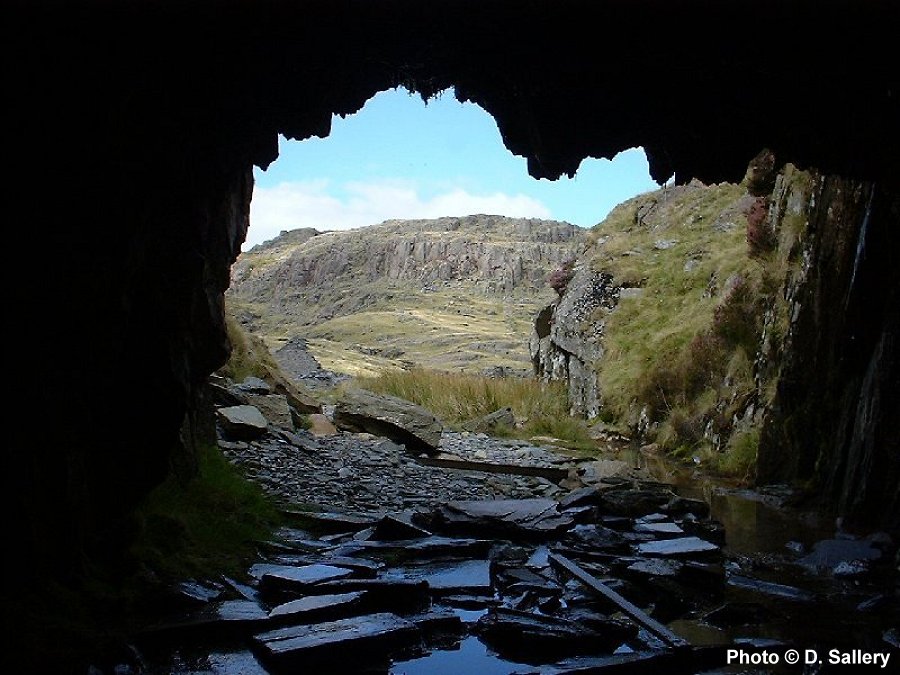
A restored Megryn

These views are of a 'megryn' which has been restored and can be seen at the excellent
Welsh
Highland Heritage Railway museum at Porthmadog. Below is a view of the
gripping
mechanism underneath the vehicle.
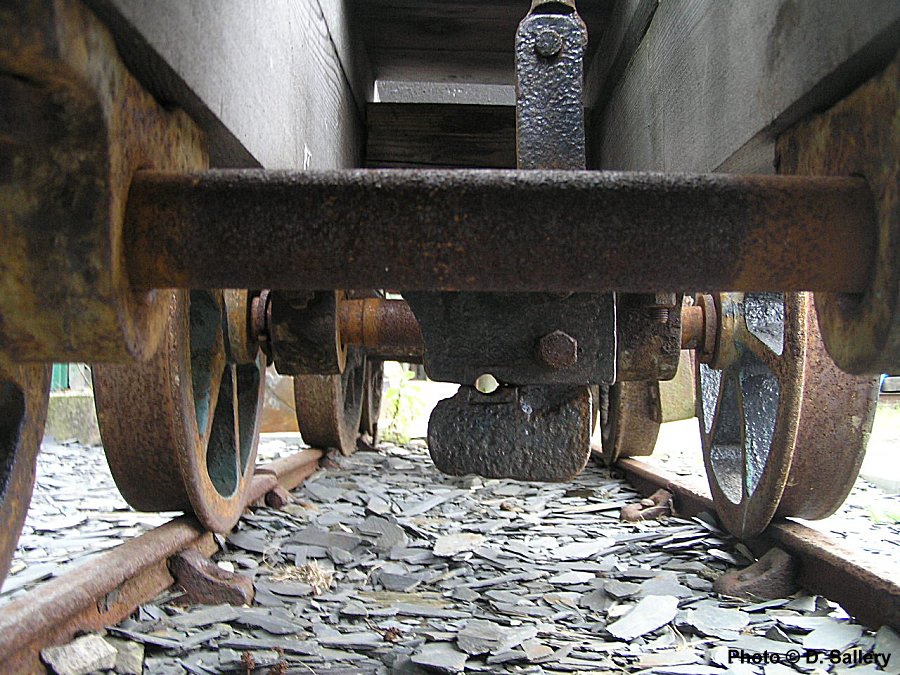
Ruined buildings on Level No.9
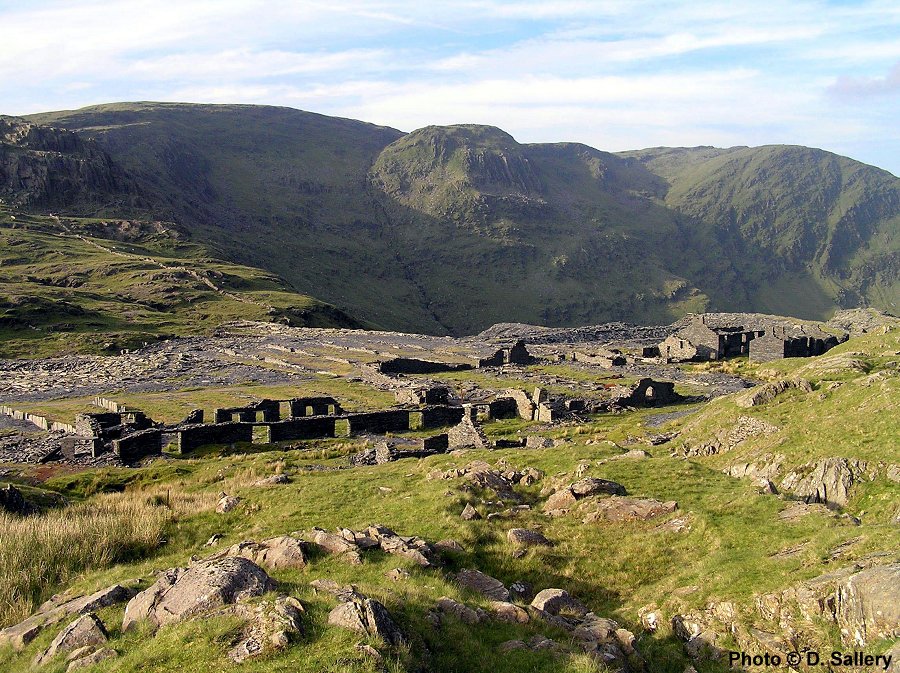
Looking
north east at the ruins of Rhosydd on Level 9. There were no locomotives at Rhosydd and all
other rail haulage used man, water or horse power. The ruins of the
mill can be seen in the centre left, with evidence of some of the walls. In its final
form this mill contained 30 saw tables and 30 dressing machines.
The roof of this building and others on site were removed in 1948 and the
machinery, by now beyond repair, had gone by 1952. On the right is the
famous quarrymens barracks of two terraces of houses.
Continue to: Living and working at Rhosydd quarry